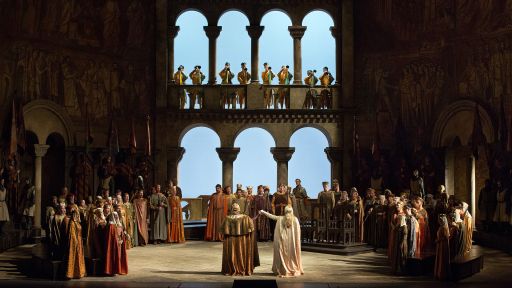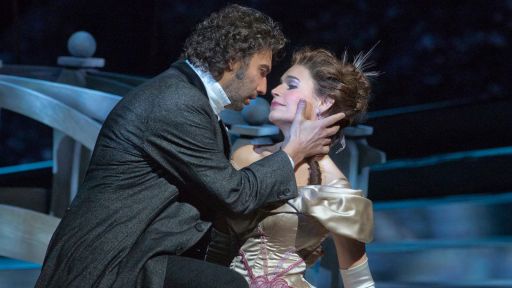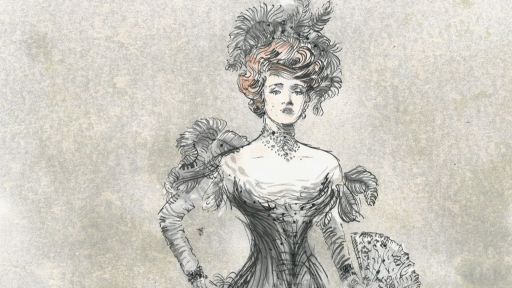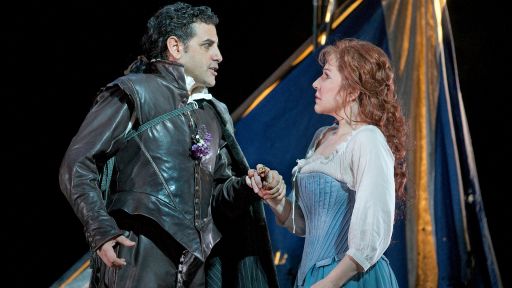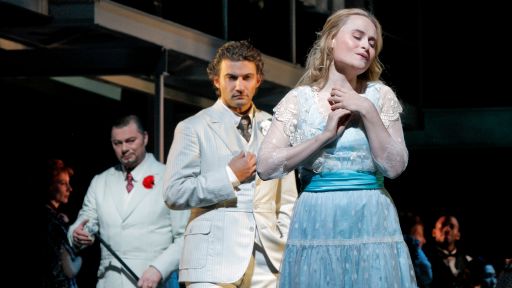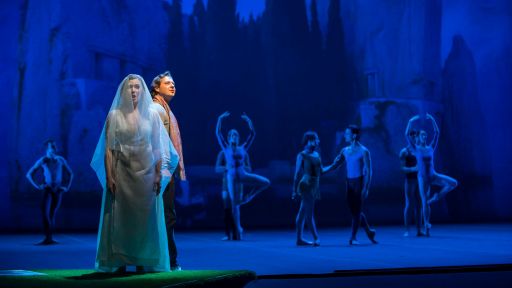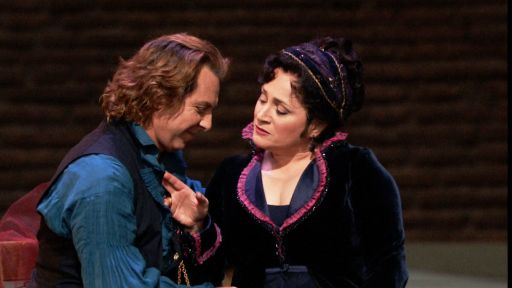James Levine conducts Richard Wagner’s Tannhäuser with Johan Botha on Great Performances at the Met Sunday, March 13 at 12 p.m. on PBS (check local schedule). Eva-Maria Westbroek, Michelle DeYoung, Peter Mattei, and Gunther Groissbock also star in Otto Schenk’s classic production.
Wagner’s early masterpiece Tannhäuser comes to Great Performances at the Met for the first time. It is the production’s first Met revival in more than a decade.
Johan Botha makes his Met role debut in the titular role; Eva-Maria Westbroek is Elisabeth, adding another Wagner heroine to her Met repertoire after her acclaimed Sieglinde in Die Walküre; Michelle DeYoung is the love goddess Venus, which she sang in the opera’s previous revival; Peter Mattei is Wolfram; and Günther Groissböck is the Landgraf.
Mezzo-soprano Susan Graham hosts the broadcast.
Opera Setting
Tannhäuser takes place in and around Wartburg Castle, in Thuringia in central Germany, and in the mythical grotto of Venus, the goddess of love. The Wartburg was the setting of a — possibly legendary — 13th-century song contest as well as the home of Saint Elisabeth. It would later become associated with Martin Luther, who translated the New Testament from Greek into German there. The pagan–Christian dichotomy expressed in the twofold setting is central to the opera’s dramatic core.
History of the Opera
The opera had its world premiere at the Court Opera in Dresden in 1845, and revised version premiered at the Opéra in Paris in 1861. History, myth, and invention come together in Tannhäuser to create a unique and powerful drama. The title character was a real 13th-century Minnesinger who inspired a legend that Wagner used as the basis for the opera. The composer added the character of Elisabeth, based on the historical Saint Elisabeth of Hungary, wife of the Landgrave of Thuringia. The opera’s score went through several revisions after the original performances, most importantly when Wagner added the Venusberg ballet for the 1861 French premiere.
Much of the score of Tannhäuser belongs to the tradition of Romantic opera that Wagner developed and transcended over the following decades to arrive at the new operatic aesthetic of his mature music dramas. In Tannhäuser, he expands mid-19th-century models of melody, harmony, and form to take his music to unprecedented expressive heights, both in the vocal and orchestral writing. The title character’s dramatic narrative in Act III, which abandons conventional melody in favor of a speech-based structure, directly points towards Wagner’s later works and remains striking in its modernity.
Critical Acclaim of Met Production
Reviewing the current production this season, The New York Times raved, “Mr. Levine drew breadth and richness from the orchestra. The Met has assembled an exceptional cast, headed by the tenor Johan Botha as Tannhäuser… [who] sang with clarion sound and impressive ease.”
New York Classical Review observed that “Mezzo-soprano Michelle DeYoung…seemed to relish the role, singing with lustrous, and lusty, power,” and noted “(t)he most powerful voice onstage was that of soprano Eva-Maria Westbroek, who sang Elisabeth. Her G in the opening phrase of ‘Dich, teure Halle’ filled the house. Her voice has the richness usually heard with mezzos, with a soprano’s shine, and throughout the night, her instrument had more presence than any other, including those in the pit.”
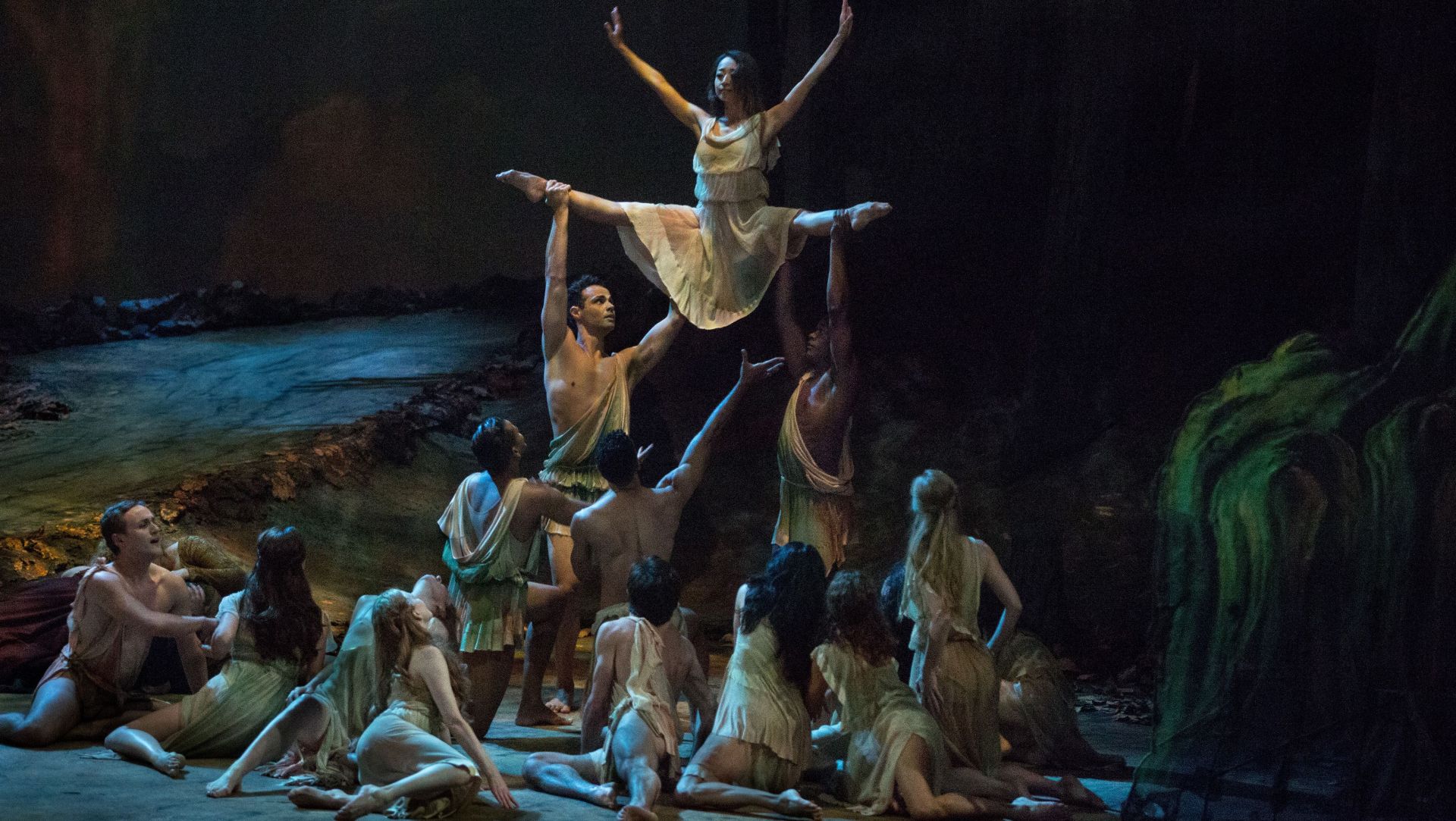
Ballet scene from Wagner’s Tannhäuser. Photo: Marty Sohl/Metropolitan Opera.

